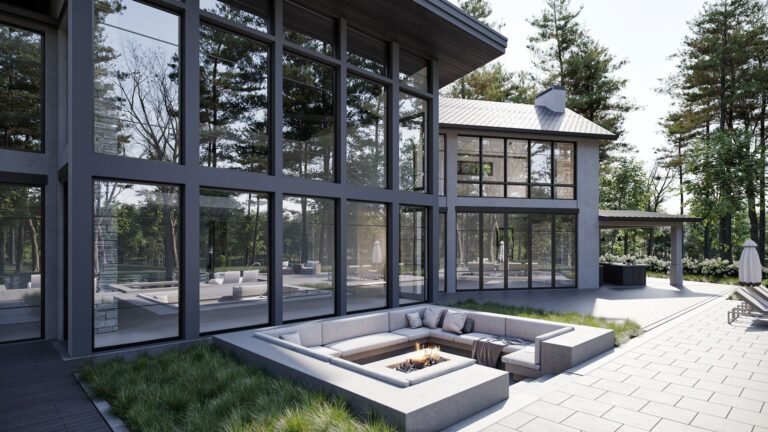When is the Best Time to Hire a Landscaper
Key Takeaways
- The spring and fall are ideal seasons to hire a landscaper to help with lawn care and landscaping projects.
- Consider hiring a landscaper in the late winter to early spring to prepare your lawn and garden beds for the growing season.
- Avoid mid-summer heat when hiring a landscaper as this causes extra stress on plants.
- Hire a landscaper in the late summer to early fall to help prepare your yard for winter and next year’s growing season.
Landscaping projects require careful timing to ensure proper growing conditions, avoid extreme weather events, and get the most value from your investment. By understanding the seasonal landscaping tasks in your region and typical weather patterns, you can determine the best time to hire a professional landscaper.
Why Hire a Professional Landscaper
Before diving into ideal hiring seasons, it helps to understand why you may want to hire a landscaping company in the first place:
Experience and Expertise
- Professional landscapers have years of experience designing, building, and maintaining residential and commercial landscapes. They understand regional climate conditions, planting zones, and optimal materials to use.
- Landscapers stay up-to-date on the latest industry best practices, technology, and design trends to incorporate into their work.
- They have the proper tools, equipment, personnel, and processes to efficiently complete landscaping projects of nearly any scale.
Saves You Time and Effort
- Landscaping work like lawn care, planting beds, walkways, irrigation, lighting, and more take considerable time, physical labor, and attention to detail.
- Hiring pros handles the heavy lifting, freeing up your weekends and evenings for other priorities.
- Professionals also monitor your landscape on a regular basis as part of maintenance services.
Produces Quality Outcomes
- From concept to completion, professional landscapers focus on craftsmanship and longevity.
- They have the skills to execute design plans properly the first time, preventing the need for costly re-work.
- You can expect a visually appealing, functional landscape tailored specifically for your property.
Ideal Seasons to Hire a Landscaper
Now that you know the key reasons to hire a professional, when exactly is the best time to solicit their services? Several factors come into play.
Spring
The spring season, spanning March through May, is an ideal period for landscaping projects and hiring a professional:
Preparing for Growing Season
- Early spring is focused on lawn preparation including aeration, overseeding, fertilization, and weed/pest control. Addressing these needs sets up your grass for vigorous growth as temperatures warm.
- It’s also time to prep garden beds and flower beds with fresh soil, compost, and mulch in anticipation of planting later in spring.
- Pruning shrubs and trees is best done in early spring before growth starts.
Planting & New Growing
- Once overnight frost risk has passed, typically by mid to late spring, the prime planting window opens.
- Hiring a landscaper to design and install new flower beds, garden beds, shrubs, ornamental trees, and more ensures proper placement for sunlight, drainage, and spacing needs.
- They can also advise on the most suitable plants and varieties for your yard’s conditions.
Spring Landscaping Projects
- Beyond lawn and planting prep and installation, spring’s moderate temperature range suits other landscaping projects:
- Hardscapes like patios, retaining walls, walkways, and driveways.
- Fences, pergolas, trellises and other structural elements around the yard.
- Swimming pools, outdoor kitchens, and entertainment spaces to enjoy during summer.
- Irrigation systems, landscape lighting, and water features.
Late Winter
While early spring gets most of the attention, late winter, spanning January and February, brings its own landscaping planning opportunities.
Start Planning
- Use winter downtime to meet with landscapers and start planning major spring projects before their schedule books up.
- Weather delays are also less likely to stall start dates the earlier you begin a project.
- Discuss concepts, share inspiration photos, get design ideas, develop plant lists, finalize budgets, etc.
Prepare for Spring Rush
- Have pros provide lawn care and tree/shrub pruning to get a jump start on spring needs.
- Building materials and plant inventory is also more plentiful before the customer rush.
Weather Delays
- In regions where winter weather routinely disrupts outdoor work, a late winter start means you lose fewer days to rain, snow, ice, etc. Extending into spring raises delay risks.
Late Summer/Early Fall
As spring and summer wind down, the late summer and early fall weeks from August through October bring prime landscaping opportunities many homeowners overlook:
Fall Lawn Preparation
- Like in spring, fall is critical for lawn repair via aeration, overseeding new grass, top dressing, and fertilizer to encourage root development before winter dormancy.
- Tree and shrub pruning is also best done in early fall.
Planting Season
- Fall offers a second annual planting season for bushes, trees, shrubs, perennials, and cold hardy annuals. Cooler temperatures are less stressful for new plantings.
Fall Landscape Projects
- Certain projects like hardscapes, irrigation systems, pools/water features, and outdoor structures are well suited to fall temperatures and before winter freeze sets in.
Prepare for Next Year
- Getting landscape maintenance and construction done in fall means everything is set before harsh winter weather and ready for vigorous spring growth.
What to Avoid
Now that we’ve covered the best times to hire a landscaper, when should you avoid starting major outdoor projects?
Mid Summer
- The peak of summer from June through August brings blistering heat, humidity, drought, and thunderstorms – tough conditions for both plants and landscapers.
- Extreme daytime temperatures cause excess plant stress. Softscapes like lawns and beds require ample water to counter dry spells.
- Landscape crews also have difficulty working long hours in intense summer heat and weather delays slow progress.
Winter
- Similarly, the depth of winter with frequent rain, snow, ice and sub-freezing temperatures nearly halts outdoor projects across many regions.
- Frozen, saturated, or snow-covered ground prevents access for equipment and proper site prep. Paperwork and planning is best suited for the winter off-season.
- Arctic air takes a toll on both plant survival and working conditions. Avoid this season for installations.
Holiday Periods
- Finally, regardless of season, landscapers experience peak demand spikes around major holidays that limit their availability:
- Christmas and New Year’s weeks
- Easter
- Memorial Day
- Independence Day
- Labor Day
- Thanksgiving
Plan your project timelines and hiring decisions around these busy franchise weeks when contractor availability severely tightens.
Key Factors When Hiring a Landscaper
Now that you know the prime seasonal windows for landscaping projects, keep the following tips in mind when preparing to hire a professional contractor:
Plan in Advance
- Given busy spring and fall schedules, landscapers often book up projects weeks or months out – don’t wait until the last minute.
- Have your design direction decided, get quotes from multiple vendors, review portfolios, etc. This makes for an efficient hiring process when you’re ready.
Specify Project Details
- Clearly communicate what services you expect Always Green Landscaping to perform and have an agreed written scope of work for reference by both parties.
- Provide property measurements, identify known underground lines/systems, and define expectations around clean-up.
- Making assumptions can lead to mismatched expectations or cost overruns down the road.
Check References & Reviews
- Reputable landscapers should furnish references from past client projects for quality and satisfaction checks.
- Online reviews and complaints lodged with the Better Business Bureau offer transparency into workmanship and reliability.
- Dramatic bid discounts compared to competitors should raise concerns.
Agree on Payment Terms
- Understand what, if any, deposit or upfront payment is required to secure project dates and materials.
- Specify final payment terms – some pros require incremental payments through long projects rather than one lump payment. Get all financial expectations in writing.
Look for Certifications
- Trade associations like PLANET offer formal certifications programs for landscaping professionals to demonstrate their expertise.
- Specialties like irrigation contractors and pool service firms have licensing programs as well.
- Training and testing create capable, vetted landscape vendors.
Validate Insurance
- Ensure your landscaper carries adequate general liability insurance and workers’ compensation policies to give recourse for damages or injuries during your project.
- Requiring current documentation protects homeowners from assuming legal and financial risks.
Check for a Warranty
- Many landscapers stand behind their work in the form of a warranty should defects arise shortly after project completion.
- Typically one year from installation is standard – understand any limitations or exclusions. Having coverage incentivizes builders to deliver lasting quality.
Frequently Asked Questions
When do most people start planning their landscaping projects?
Most homeowners and property managers use the winter offseason to start planning any major landscaping projects for spring implementation or smaller enhancements ahead of summer entertainment months. Smart planning ensures preferred contractors have open schedules and ample lead time for sourcing materials/equipment.
How soon in advance should I request quotes?
Its best practice to start the quoting process 4-6 weeks ahead of when you hope to start. This allows proper bid evaluation, follow up Q&A, final scope confirmation, contract paperwork, permitting if needed, and material/crew scheduling. Landscapers booking prime seasons months out may close quoting to manage capacity.
Can landscaping work year round?
While certain maintenance tasks occur year round during favorable weather, most substantial landscape construction and enhancement projects follow more seasonal schedules. Dormant winter months limit planting options as well as masonry and concrete work dependent on acceptable temperature range conditions. The most robust project windows align with spring and fall weather patterns.
How much more do landscapers charge during peak seasons?
Supply and demand drives pricing so landscapers tend to charge premium rates during their busiest spring and fall weeks – sometimes 15-25% percent above non-peak periods. They may also tack on surcharges for accelerated service during popular seasons. Keeping projects flexible to off-peak scheduling can yield significant per hour labor savings alongside better contractor availability.





